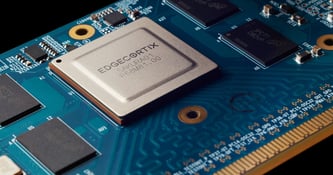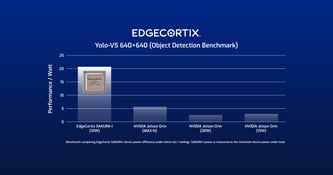Beyond the Cloud and Into Space: Key Edge AI Insights from EdgeCortix at ACCJ

Jasmine Woodruff

Exploring how EdgeCortix’s AI technology is designed for real-world performance—from telecom networks to space missions
During the American Chamber of Commerce in Japan (ACCJ) fireside chat this week, Dr. Sakyasingha (Sakya) Dasgupta, founder and CEO of EdgeCortix, shared insights on the practical realities of deploying AI at the edge. His talk focused on how thoughtful engineering and strategic design decisions enable AI to perform reliably under real-world constraints, from thermal limits to power restrictions, and across diverse operating environments.
One of the first points Sakya made was about scale. EdgeCortix is fabless, following a model similar to companies like NVIDIA and Apple. This isn’t just a structural choice, it’s strategic. By concentrating on software design and neural processing architecture, the intellectual property that drives a semiconductor, while partnering with world-class fabs (like TSMC), EdgeCortix avoids heavy upfront capital costs, allowing faster iteration and a sharper focus on R&D driving outcomes. This clarity in focus and resource allocation makes the technology easier for partners, investors, and customers to understand and adopt.
Sakya also pointed to a core constraint in edge environments: heat. Managing thermal limits is critical for AI to operate effectively, whether in a telecom tower, a drone, or a satellite. That reality shapes how EdgeCortix approaches design. Instead of building hardware and software separately, the company starts with software and lets it guide the hardware design. The result is a co-designed stack optimized for efficiency from the ground up, enabling AI to run on small, power-limited devices without exceeding thermal limits.
Another key point was portability. Many AI solutions are built for a single use case and then twisted and adapted for each new environment. EdgeCortix takes a different approach: one runtime that can operate across land, air, and space, supporting diverse sensor stacks. A perception stack, for instance, can move from a warehouse drone to a high-altitude platform with minimal adaptation, reducing integration complexity and saving time.
The talk also highlighted unexpected applications. Following selection by the U.S. Defense Innovation Unit and a multi-year collaboration with NASA, the SAKURA family of solutions demonstrated 10X greater radiation resilience at low power compared with commercial-off-the-shelf AI accelerators. These results underscore the potential of EdgeCortix technology in space exploration, where reliability and resilience are critical. As Sakya remarked, “We used to look up at the moon as something unreachable. Now, with AI that can function in space, it’s within reach.”
Closer to Earth, telecom applications demonstrate similar advantages. EdgeCortix technology runs AI workloads efficiently at the network edge, where latency, energy efficiency, and reliability are essential, highlighting the value of edge AI in environments where cloud-based approaches fall short.
Sakya also addressed broader industry and national challenges. While Japan currently trails China in semiconductor innovation, he framed this gap as an opportunity. With world-class engineering talent, strong corporate partners, and a solid research base, the country has the potential to lead if startups, academia, and government collaborate effectively. EdgeCortix itself exemplifies this approach, being recognized as one of the first ten companies selected for Saudi Arabia’s new innovation program and one of the World Economic Forum’s 100 most promising technology pioneers across 23 economies.
Investor concerns about capital intensity and timelines were addressed directly. Sakya’s guidance was practical: maintain the fabless model, demonstrate technology in demanding environments, and enable staged adoption. Approached this way, edge AI is not a speculative moonshot but a technology ready for real-world deployment.
The ACCJ talk made one thing clear: successful edge AI is designed for the constraints of deployment. Systems must operate within limits on size, weight, and power, function reliably with limited or intermittent connectivity, and remain resilient to environmental challenges. EdgeCortix technology is already meeting these demands across domains ranging from space and defense to telecom infrastructure.
Edge AI is not a distant vision. By focusing on efficiency, resilience, and adaptability under real-world conditions, EdgeCortix is demonstrating how AI can deliver tangible impact where it matters most. The ACCJ fireside chat highlighted how strategic engineering choices, practical constraints, and real-world testing are enabling the next generation of AI—on Earth and in space.

Jasmine Woodruff
Jasmine Woodruff is Marketing and Communications Manager at EdgeCortix, where she leads global marketing, PR, and corporate communications initiatives. She drives the company’s messaging, positioning EdgeCortix as a leader in AI acceleration technology, and ensures key narratives reach investors, partners, and industry audiences worldwide.
Related Posts


Efficient Edge AI Chips with Reconfigurable Accelerators

